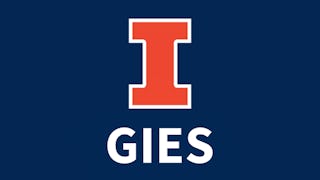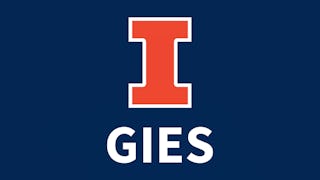3D printing with metals is revolutionizing manufacturing, engineering, and artistry. In “Introduction to 3D Printing with Metals,” you’ll learn about the essential elements of the technology, and how it can be applied to a range of use cases.



Introduction to 3D Printing with Metals

Instructeur : Chinedum “Chi” Okwudire
2 541 déjà inscrits
Inclus avec 
(10 avis)
Expérience recommandée
Ce que vous apprendrez
Recognize the importance and applications of 3D printing with metals in engineering, industrial contexts, and art and design
Articulate how 3D printing with metals differs from 3D printing with plastics
Explain five different families of processes used to 3D print with metals
Determine which 3D printing method is suited for your project
Détails à connaître

Ajouter à votre profil LinkedIn
novembre 2024
12 devoirs
Découvrez comment les employés des entreprises prestigieuses maîtrisent des compétences recherchées


Obtenez un certificat professionnel
Ajoutez cette qualification à votre profil LinkedIn ou à votre CV
Partagez-le sur les réseaux sociaux et dans votre évaluation de performance

Il y a 5 modules dans ce cours
Welcome to the Introduction to 3D Printing with Metals course! Why does one need to 3D print with metals? When is it better to 3D print with metals as opposed to plastic? How is it different? This module will allow you to answer these important questions by reviewing the fundamentals of 3D printing with plastics and introducing the process of 3D printing with metals. Let's start printing!
Inclus
9 vidéos6 lectures3 devoirs1 élément d'application3 sujets de discussion
Welcome to Module 2! Imagine this: Instead of welding metallic parts together, what if we let the weld be part itself? How to do that? Our imagination can become a reality. Directed Energy Deposition (DED) with metals is a family of processes that allow one to “draw” a part in 3D space by welding together material nonstop until the part is finished. In principle, this would be human-operable, but robotic welders do it because it requires long periods of nonstop operation. This module reviews three types of DED processes, which differ in the size and precision of the machinery used, in the form of the metal stock being welded, and in how the weld is performed. Let's start printing!
Inclus
14 vidéos5 lectures3 devoirs1 élément d'application2 sujets de discussion
Welcome to Module 3! There are many applications for 3D printing with metals that demand extreme precision, far more so than the extrusion-based and welding-based processes—we have learned about so far—can satisfy. A class of processes called Powder Bed Fusion (PBF) addresses this concern by fusing metal powder particles with a far smaller and more concentrated heat source than Directed Energy Deposition (DED), with the powder particles laying stationary as a flat surface to further remove process variability. In this module, we will learn about two types of PBF processes, which differ in the technology used for the heat source. Let's start printing!
Inclus
8 vidéos4 lectures2 devoirs1 élément d'application2 sujets de discussion
Welcome to Module 4! In Module 3, we discussed the powder bed fusion processes and how they produce parts with extreme geometric complexity. However, they are very slow processes. So, what could be done to improve the process speed? A class of methods known as jetting-based processes addresses these concerns by joining powder particles together at room temperature using a glue-like binder and then fusing the joined particles together into a solid part as a post-processing step. This can be done much faster than a continuous application of heat. In this module, we review two types of jetting-based processes, which differ in how the powder particles are joined together during the layer-wise printing process. Let's start printing!
Inclus
9 vidéos4 lectures2 devoirs1 élément d'application2 sujets de discussion
Welcome to Module 5, the last Module of the Course! We know already that many applications for 3D printing with metals demand extremely strict quality control. The various fusing methods discussed earlier in the course struggle to meet these demands. Lamination-based processes address this limitation by joining together layers of metal sheets via low-intensity methods that almost exactly reproduce the properties of traditionally wrought material without needing extra post-processing work. In this module, we review two types of jetting-based processes, which differ in the technology used to fuse the metal sheets together. Let's finalize printing!
Inclus
9 vidéos6 lectures2 devoirs1 élément d'application2 sujets de discussion
Instructeur

Offert par
Recommandé si vous êtes intéressé(e) par Mechanical Engineering

University of Illinois Urbana-Champaign

University of Illinois Urbana-Champaign

University of Illinois Urbana-Champaign

University of Illinois Urbana-Champaign
Pour quelles raisons les étudiants sur Coursera nous choisissent-ils pour leur carrière ?




Avis des étudiants
10 avis
- 5 stars
70 %
- 4 stars
30 %
- 3 stars
0 %
- 2 stars
0 %
- 1 star
0 %
Affichage de 3 sur 10
Révisé le 2 avr. 2025
Great survey course to feel more confident in investigating projects with additive manufacturing.

Ouvrez de nouvelles portes avec Coursera Plus
Accès illimité à 10,000+ cours de niveau international, projets pratiques et programmes de certification prêts à l'emploi - tous inclus dans votre abonnement.
Faites progresser votre carrière avec un diplôme en ligne
Obtenez un diplôme auprès d’universités de renommée mondiale - 100 % en ligne
Rejoignez plus de 3 400 entreprises mondiales qui ont choisi Coursera pour les affaires
Améliorez les compétences de vos employés pour exceller dans l’économie numérique
Foire Aux Questions
Access to lectures and assignments depends on your type of enrollment. If you take a course in audit mode, you will be able to see most course materials for free. To access graded assignments and to earn a Certificate, you will need to purchase the Certificate experience, during or after your audit. If you don't see the audit option:
The course may not offer an audit option. You can try a Free Trial instead, or apply for Financial Aid.
The course may offer 'Full Course, No Certificate' instead. This option lets you see all course materials, submit required assessments, and get a final grade. This also means that you will not be able to purchase a Certificate experience.
When you purchase a Certificate you get access to all course materials, including graded assignments. Upon completing the course, your electronic Certificate will be added to your Accomplishments page - from there, you can print your Certificate or add it to your LinkedIn profile. If you only want to read and view the course content, you can audit the course for free.
You will be eligible for a full refund until two weeks after your payment date, or (for courses that have just launched) until two weeks after the first session of the course begins, whichever is later. You cannot receive a refund once you’ve earned a Course Certificate, even if you complete the course within the two-week refund period. See our full refund policy.
Plus de questions
Aide financière disponible,

